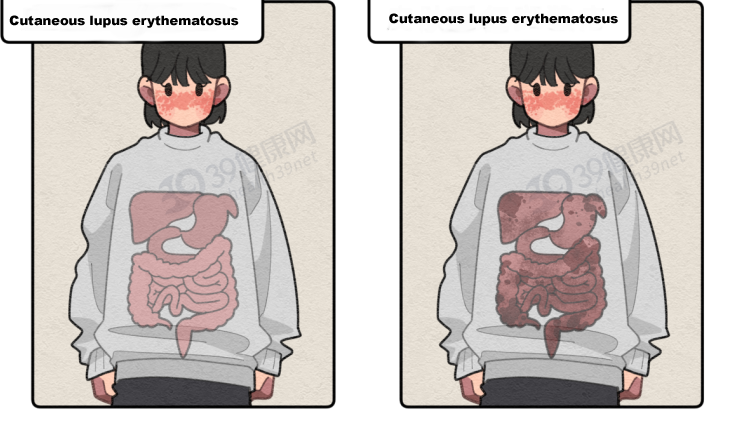What is lupus erythematosus?
Lupus erythematosus, a systemic autoimmune disease, is also known as the 'cancer that never dies'. Anyone hearing the name for the first time will probably be taken aback. The origin of the name dates back to the 5th and 4th centuries BC, when a special patient came to Hippocrates' clinic with a face that looked like it had been gnawed by a wolf. Even the doctors didn't know what it was and had to treat it as a skin condition, which Hippocrates later described as a "painful bitten dermatitis".

In 855 AD, the word Lupus (wolf) was used to describe a strange skin disease that was very similar to the one Hippocrates had described earlier. The terms "skin disease" and "wolf bite" were gradually linked together. Because the strange disease was more like an injury, doctors began treating it with the same methods used for wolf bites, and the results were obvious.
Discovering the truth about lupus erythematosus
In 1948, doctors at the Cleveland Clinic discovered a strange globular structure in a patient with lupus erythematosus. A year later, to prove its connection with lupus, doctors successfully induced 'lupus cells' in the bone marrow cells of non-lupus patients using the serum of lupus patients, which provided key information for finding out the truth about the cause of lupus.
Several more experiments were carried out and it was eventually proved that it was the IgG globulin (later named antinuclear antibodies) in the serum that was responsible for treating our own nucleus as a foreign body and attacking it, causing the symptoms of lupus erythematosus.

Is lupus scary?
Lupus is divided into cutaneous lupus erythematosus and systemic lupus erythematosus

Cutaneous lupus erythematosus
Patients may have large red patches on the cheeks and nose that look like red butterflies, and may also involve the forehead, neck, eyes and uncovered areas of the chest.
If it is generalised, there may also be a generalised, symmetrical rash of spots and papules with itching. There are also complex symptoms such as fever, malaise, mouth ulcers, joint pain, interstitial fibrosis of the lungs, pericardial effusion and pleural effusion.

Systemic lupus erythematosus
This type of lupus erythematosus is even more dangerous because it affects multiple organs and, if left untreated, can cause irreversible damage to organs and, in severe cases, even death. And because it can involve multiple systems, it is highly heterogeneous, with the organs involved and the severity of the disease varying from patient to patient, making treatment difficult.
Unfortunately, there is no cure for SLE and we have to be prepared to fight a constant battle against it.
Patients with SLE usually require long-term medication and regular follow-up reviews. Commonly used treatment drugs include glucocorticoids, antimalarials and immunosuppressants, following the principles of early diagnosis, early treatment and individualisation.
However, there is no need to be discouraged. With improved medical treatment, many patients are able to keep their disease under stable control for years or even decades without any attacks. Most patients can work, live and study normally, and even get married and have children. Apart from treatment with medication, there are things we can do in our lives.
Remember these 4 things that can help you soothe your symptoms .
1,Avoid direct sunlight;
2,Dietary modification by eating more deep-sea fish, nuts, sweet potatoes and carrots;
3,Exercise properly to help maintain the normal functioning of all body functions;
4,Quit smoking. Not only is smoking a risk of cancer, but smoking in SLE patients also causes respiratory problems.

Can lupus erythematosus be prevented?
There are no effective prevention options for lupus erythematosus, which is most common in women aged 20-40 years and has a male to female prevalence ratio of 1:9. Its cause is not known, but research suggests that it is linked to genes, ultraviolet light, drugs, infections and oestrogen.
It is therefore worth paying attention to these three things in life:
1,Remove triggers: Be cautious with and rationalize the use of medications that may trigger lupus, such as penicillin, sulfa drugs, and phentermine. Avoid sun exposure and ultraviolet radiation, and avoid irritating topical drugs.
2,Adjust your mentality: pay attention to emotional stability, have a good state of mind, and maintain regular living habits, pay attention to the combination of work and rest, and take proper rest to keep the hormone secretion in the body in a balanced state as far as possible
3,Strengthen exercise: If there are people with lupus in your family or your resistance is poor, it is recommended that you should strengthen exercise and moderate exercise in your life, such as running and hiking every day, in order to improve your resistance and immunity.






